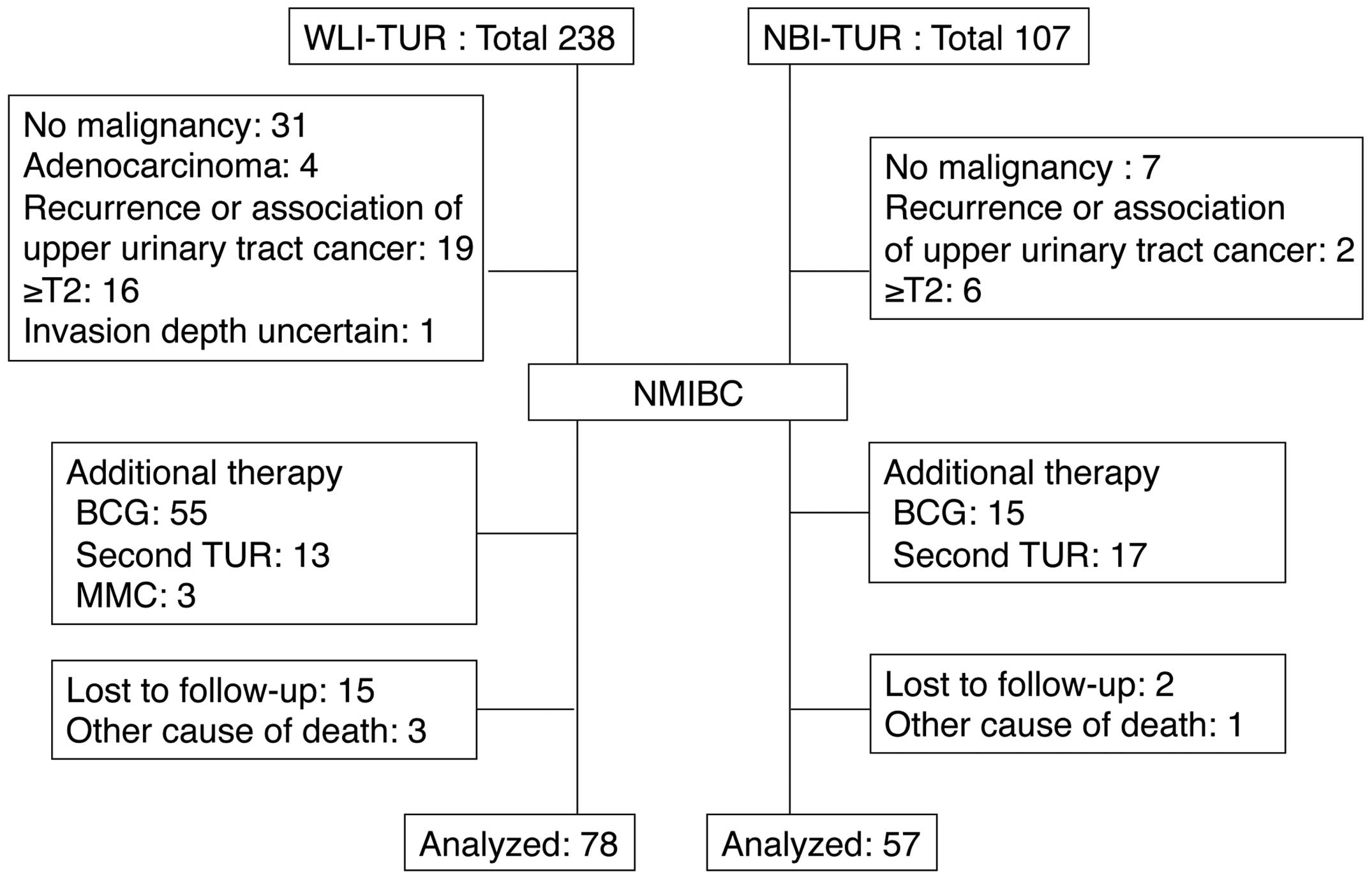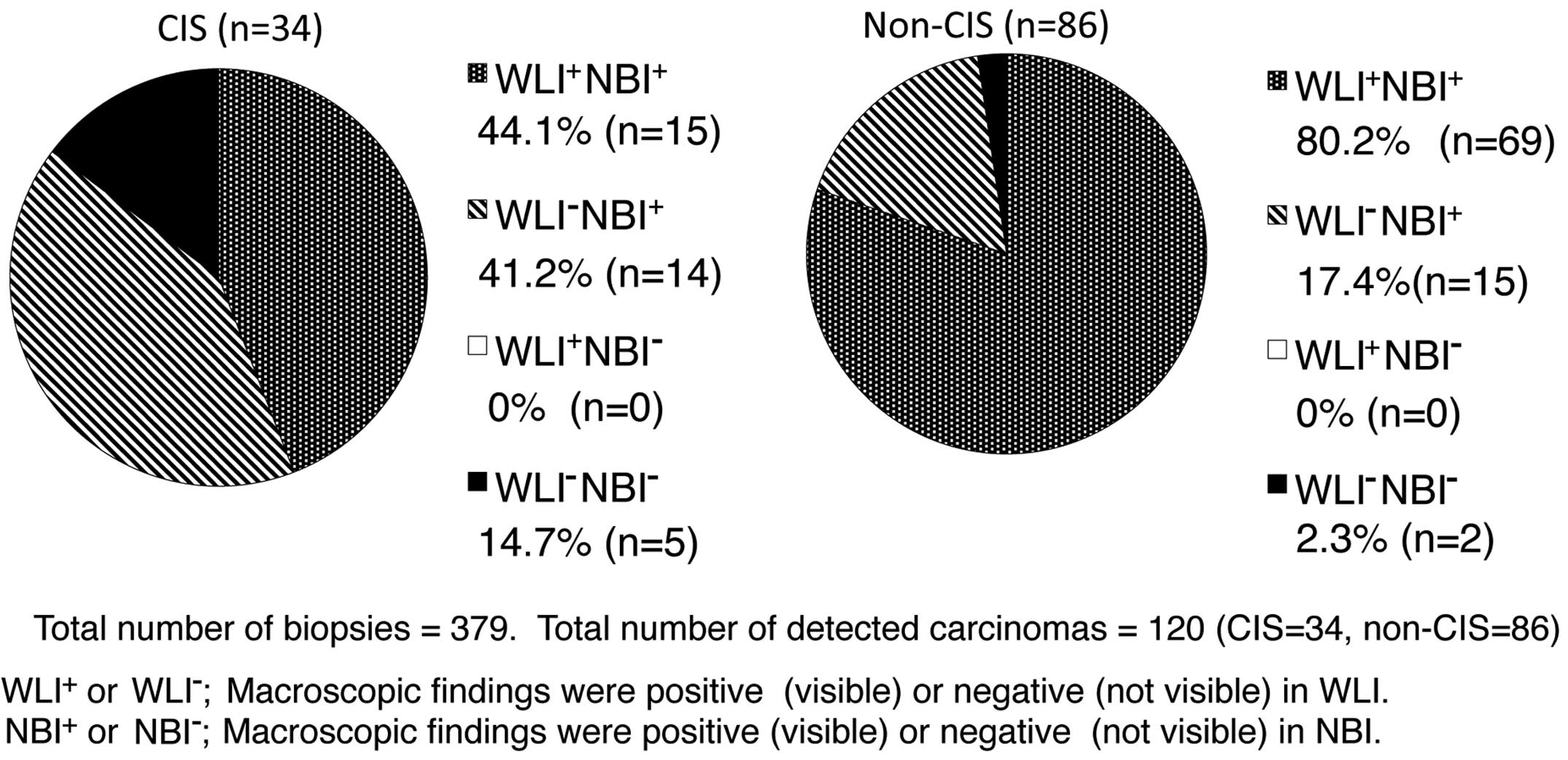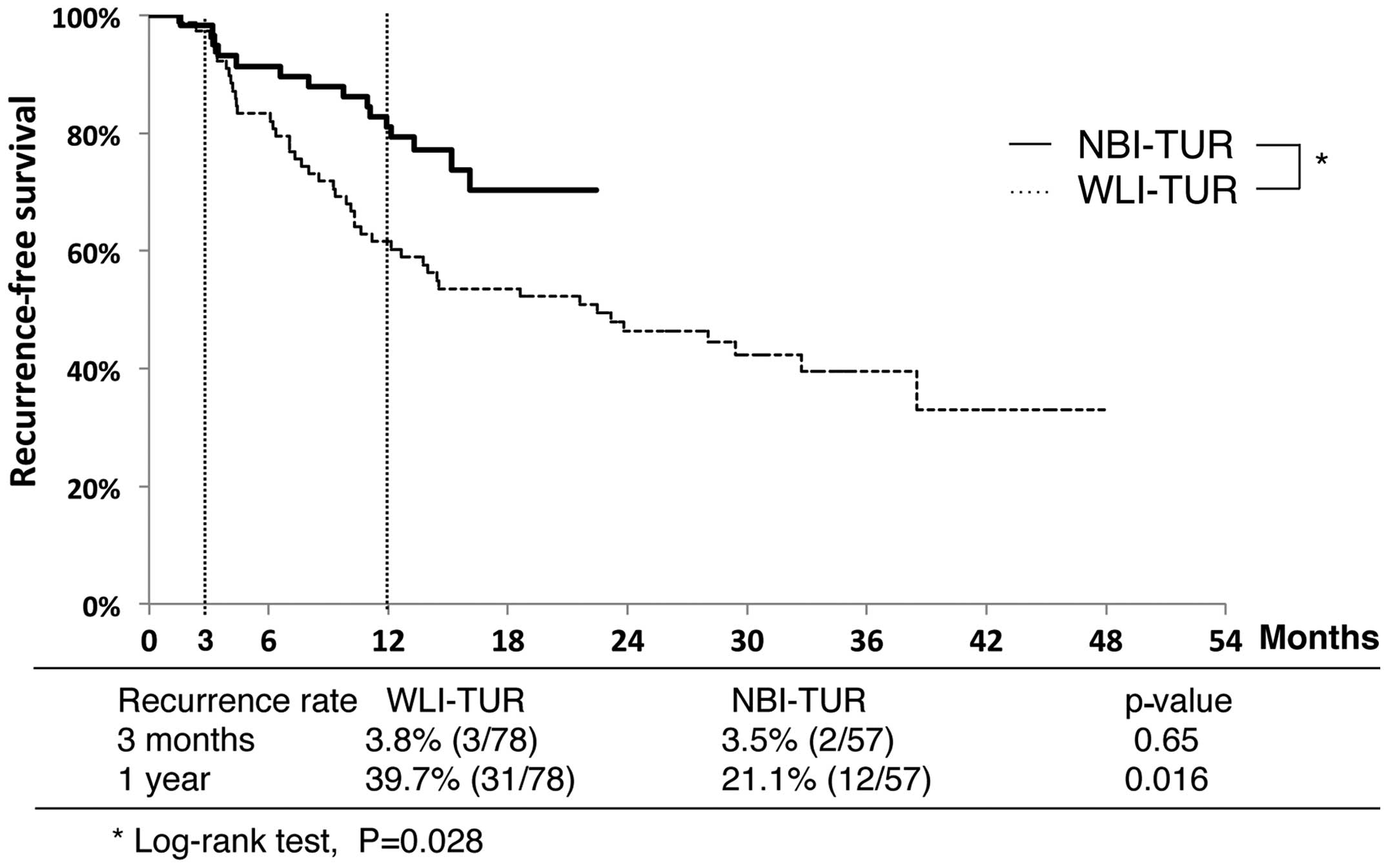|
1
|
Olympus, . News release. December 26–2006
Endoscopic videoscope system. http://www.olympus-europa.com/medical/en/medical_systems/applications/urology/bladder/narrow_band_imaging__nbi_/narrow_band_imaging__nbi_.htmlAccessed.
April 22–2015
|
|
2
|
Hirata I, Nakagawa Y, Ohkubo M, Yahagi N
and Yao K: Usefulness of magnifying narrow-band imaging endoscopy
for the diagnosis of gastric and colorectal lesions. Digestion.
85:74–79. 2012. View Article : Google Scholar : PubMed/NCBI
|
|
3
|
Bryan RT, Billingham LJ and Wallace DM:
Narrow-band imaging flexible cystoscopy in the detection of
recurrent urothelial cancer of the bladder. BJU Int. 101:702–706.
2008. View Article : Google Scholar : PubMed/NCBI
|
|
4
|
Naselli A, Introini C, Timossi L, et al: A
randomized prospective trial to assess the impact of transurethral
resection in narrow band imaging modality on non-muscle-invasive
bladder cancer recurrence. Eur Urol. 61:908–913. 2012. View Article : Google Scholar : PubMed/NCBI
|
|
5
|
Cauberg EC, Mamoulakis C, de la Rosette JJ
and de Reijke TM: Narrow band imaging-assisted transurethral
resection for non-muscle invasive bladder cancer significantly
reduces residual tumor rate. World J Urol. 29:503–509. 2011.
View Article : Google Scholar : PubMed/NCBI
|
|
6
|
Naselli A, Introini C, Bertolotto F, Spina
B and Puppo P: Narrow band imaging for detecting residual/recurrent
cancerous tissue during second transurethral resection of newly
diagnosed non-muscle-invasive high-grade bladder cancer. BJU Int.
105:208–211. 2010. View Article : Google Scholar : PubMed/NCBI
|
|
7
|
Tatsugami K, Kuroiwa K, Kamoto T, et al:
Evaluation of narrow-band imaging as a complementary method for the
detection of bladder cancer. J Endourol. 24:1807–1811. 2010.
View Article : Google Scholar : PubMed/NCBI
|
|
8
|
Cauberg EC, Kloen S, Visser M, et al:
Narrow band imaging cystoscopy improves the detection of
non-muscle-invasive bladder cancer. Urology. 76:658–663. 2010.
View Article : Google Scholar : PubMed/NCBI
|
|
9
|
Herr HW and Donat SM: A comparison of
white-light cystoscopy and narrow-band imaging cystoscopy to detect
bladder tumour recurrences. BJU Int. 102:1111–1114. 2008.
View Article : Google Scholar : PubMed/NCBI
|
|
10
|
Babjuk M, Oosterlinck W, Sylvester R,
Kaasinen E, Böhle A and Palou-Redorta JEuropean Association of
Urology (EAU): EAU guidelines on non-muscle-invasive urothelial
carcinoma of the bladder. Eur Urol. 54:303–314. 2008.
|
|
11
|
Brausi M, Collette L, Kurth K, van der
Meijden AP, et al EORTC Genito-Urinary Tract Cancer Collaborative
Group: Variability in the recurrence rate at first follow-up
cystoscopy after TUR in stage Ta T1 transitional cell carcinoma of
the bladder: A combined analysis of seven EORTC studies. Eur Urol.
41:523–531. 2002. View Article : Google Scholar : PubMed/NCBI
|
|
12
|
Brausi M: Are new technologies for
detection and treatment of non-muscle-invasive bladder cancer
(NMIBC) so important? A plea for adoption by teaching programs to
improve results after standard white light transurethral resection
of NMIBC. Eur Urol. 61:914–916. 2012. View Article : Google Scholar : PubMed/NCBI
|
|
13
|
Sylvester RJ, van der Meijden AP,
Oosterlinck W, et al: Predicting recurrence and progression in
individual patients with stage Ta T1 bladder cancer using EORTC
risk tables: a combined analysis of 2596 patients from seven EORTC
trials. Eur Urol. 49:466–477. 2006. View Article : Google Scholar : PubMed/NCBI
|
|
14
|
Daniltchenko DI, Riedl CR, Sachs MD, et
al: Long-term benefit of 5-aminolevulinic acid fluorescence
assisted transurethral resection of superficial bladder cancer:
5-year results of a prospective randomized study. J Urol.
174:2129–2133. 2005. View Article : Google Scholar : PubMed/NCBI
|
|
15
|
Schumacher MC, Holmäng S, Davidsson T,
Friedrich B, Pedersen J and Wiklund NP: Transurethral resection of
non-muscle-invasive bladder transitional cell cancers with or
without 5-aminolevulinic acid under visible and fluorescent light:
results of a prospective, randomised, multicentre study. Eur Urol.
57:293–299. 2010. View Article : Google Scholar : PubMed/NCBI
|
|
16
|
Clinical Research Office of the
Endourological society, . The Global Randomized NBI Bladder Cancer
study. http://www.croesoffice.org/OngoingProjects/NBIStudy.aspx
|
|
17
|
Botteman MF, Pashos CL, Radaelli A, Laskin
B and Hauser R: The health economics of bladder cancer: A
comprehensive review of the published literature.
Pharmacoeconomics. 21:1315–1330. 2003. View Article : Google Scholar : PubMed/NCBI
|












